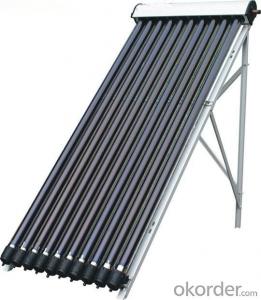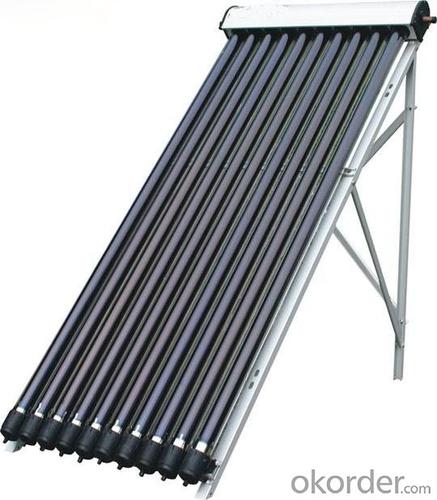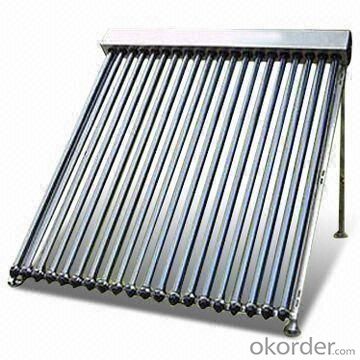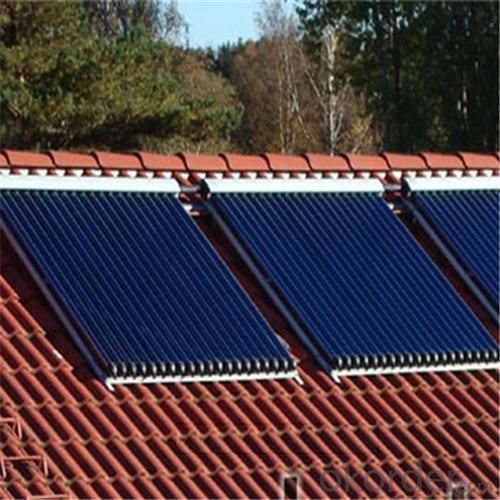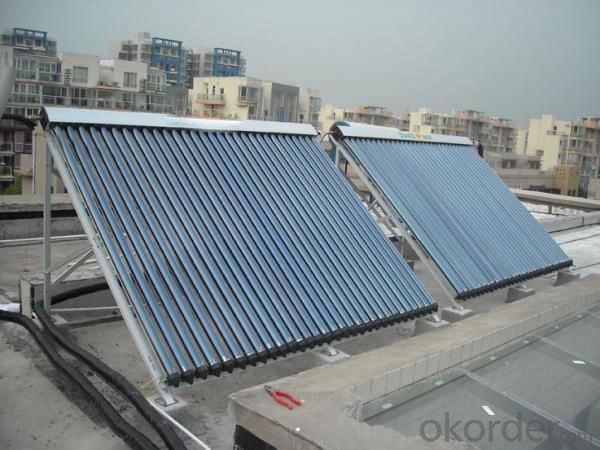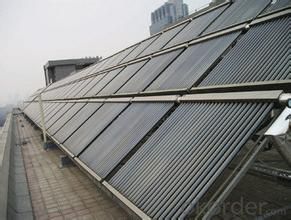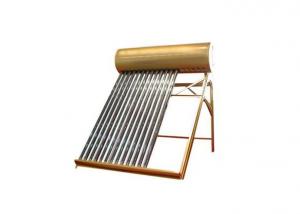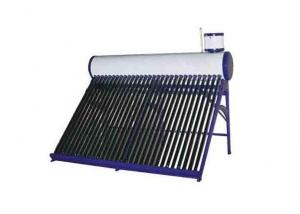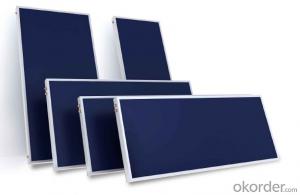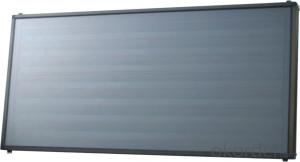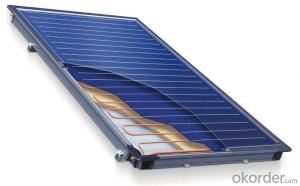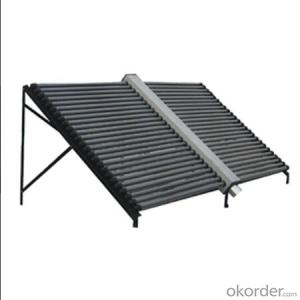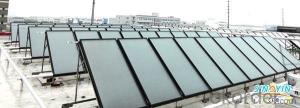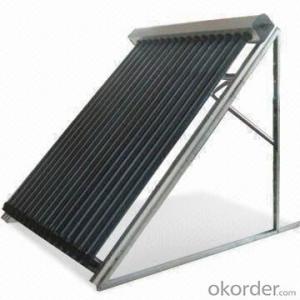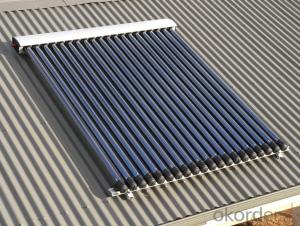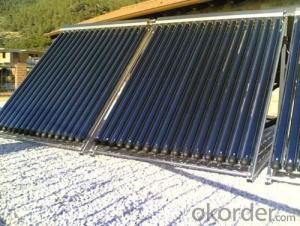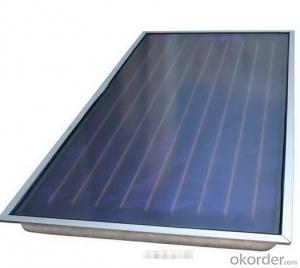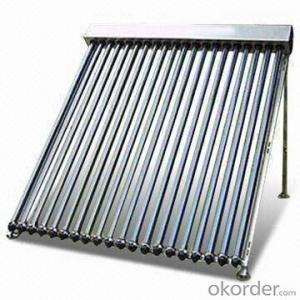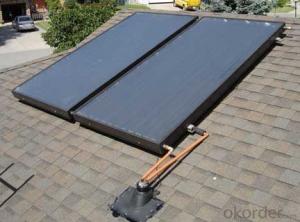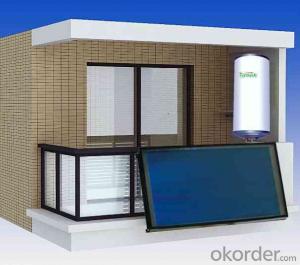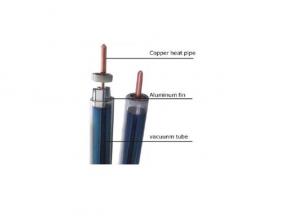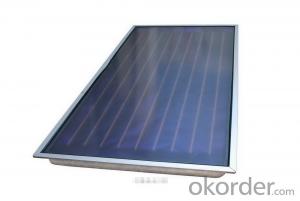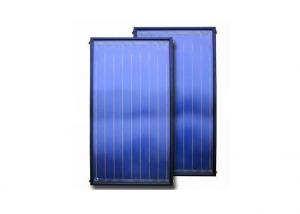High Efficiency Warm Air Solar Collectors with Solar Thermal Vacuum Tubes
- Loading Port:
- China main port
- Payment Terms:
- TT OR LC
- Min Order Qty:
- 5 set
- Supply Capability:
- 10000 set/month
OKorder Service Pledge
OKorder Financial Service
You Might Also Like
Specification
manifold (inner) | red copper |
manifold (exterior) | aluminum alloy |
glass tube dimensions | 58mm * 1800mm |
daily efficiency | ≥55% |
heat preservation | 72 hours |
hail resistance | 25mm |
max pressure | 7 bar |
coating of vacuum tube | ALN/AIN-SS/CU |
heat pipe | anti-freezing > -35 degree |
certificate | Solar Keymark, EN12975,SRCC |
Serious Product
Models | L*W*H mm | Vacuum tube | Power output | Efficiency | Header mm | Frame | container loading 20FT/40HQ sets | Gross Weight kg |
SHC-8 | 1917*910*133 | 58*1800*8pcs | 939W | 0.668 | Φ35/1.0 | AL alloy | 185/445 | 27 |
SHC-10 | 1917*1130*133 | 58*1800*10pcs | 1189W | 159/385 | 33 | |||
SHC-12 | 1917*1350*133 | 58*1800*12pcs | 1440W | 149/358 | 40 | |||
SHC-15 | 1917*1680*133 | 58*1800*15pcs | 1815W | 120/290 | 49 | |||
SHC-18 | 1917*2010*133 | 58*1800*18pcs | 2191W | 100/242 | 59 | |||
SHC-20 | 1917*2230*133 | 58*1800*20pcs | 2442W | 87/210 | 66 | |||
SHC-22 | 1917*2450*133 | 58*1800*22pcs | 2692W | 83/202 | 72 | |||
SHC-24 | 1917*2670*133 | 58*1800*24pcs | 2943W | 77/188 | 79 |
Packaging & Delivery
Packaging Details: | Exporting Carton with big foaming protection |
Delivery Detail: | In 10-15 days |
Loading Quantity
Model | Tube | Tube Q.T.Y | Loading Q.T.Y/40HQ |
GSC15 | 58*1800mm | 15pcs | 315sets |
GSC18 | 58*1800mm | 18pcs | 265sets |
GSC20 | 58*1800mm | 20pcs | 248sets |
GSC22 | 58*1800mm | 22pcs | 225sets |
GSC25 | 58*1800mm | 25pcs | 200sets |
GSC30 | 58*1800mm | 30pcs | 168sets |
Details of solar collector:
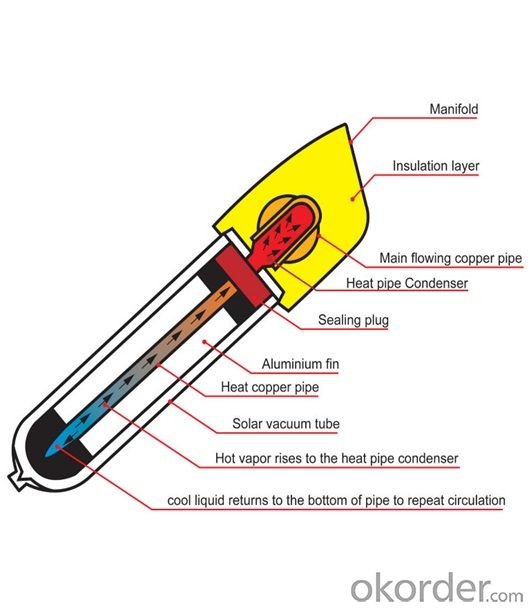
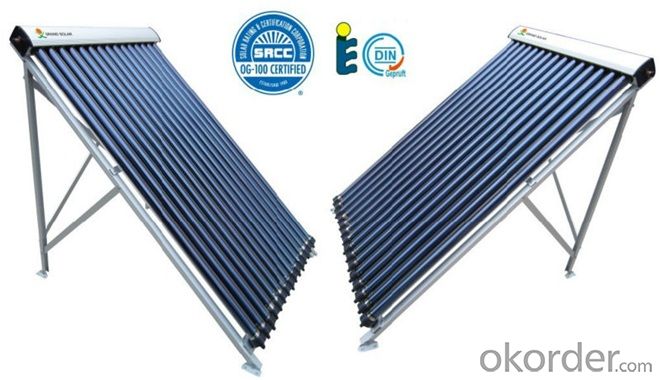
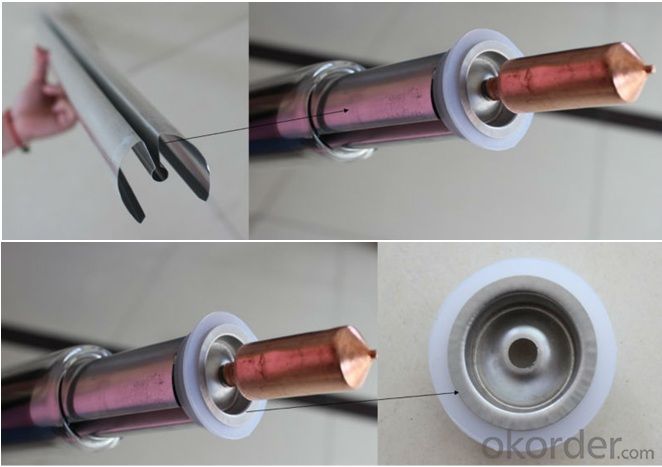
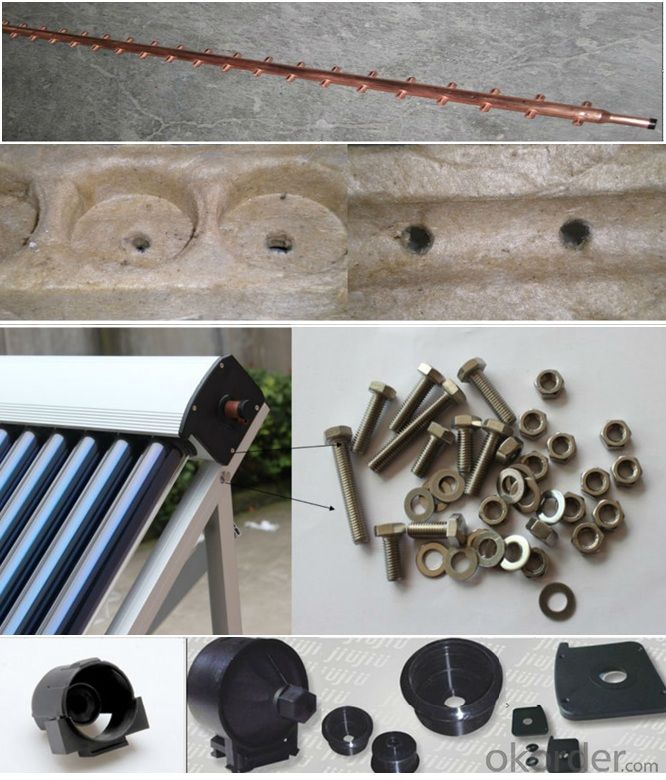
- Q: Can solar collectors be used for heating monasteries?
- Yes, solar collectors can be used for heating monasteries. Solar collectors are an effective and sustainable way to harness the sun's energy for heating purposes. They can provide a reliable source of heat, reducing reliance on traditional heating methods and lowering energy costs for monasteries. Additionally, using solar collectors aligns with the principles of environmental stewardship often practiced in monastic communities.
- Q: Can solar collectors be used in areas with limited access to support organizations?
- Yes, solar collectors can be used in areas with limited access to support organizations. Solar collectors are a self-sufficient technology that can operate independently without relying on support organizations. They can be installed and maintained by local communities or individuals, making them suitable for remote areas with limited infrastructure. Solar collectors provide a reliable and sustainable source of energy, making them an ideal solution for off-grid locations with limited access to support organizations.
- Q: Can solar collectors be used for heating refineries?
- Yes, solar collectors can be used for heating refineries. Solar thermal technologies, such as concentrated solar power (CSP) or solar water heating systems, can provide heat through direct or indirect methods to meet the heating requirements of refineries. These collectors can harness solar energy to generate high-temperature steam, which can then be utilized in various refinery processes, such as oil distillation, desalting, or hydrogen production. Implementing solar collectors for heating can help reduce the reliance on fossil fuels, decrease greenhouse gas emissions, and contribute to a more sustainable and environmentally friendly operation of refineries.
- Q: Can solar collectors be used for generating electricity on traffic signals?
- Traffic signals can utilize solar collectors to produce electricity. These collectors, also known as solar panels or photovoltaic panels, convert sunlight into usable energy through the photovoltaic effect. To maintain a consistent power supply, traffic signals typically require a continuous source of electricity, which can be provided by solar collectors. To harness sunlight and convert it into electricity, solar collectors can be installed either on top of traffic signal poles or nearby structures. The electricity generated can be stored in batteries or directly fed into the grid to power the traffic signals. Any excess energy produced during the day can be stored and utilized during periods of low sunlight or at night. Utilizing solar collectors for generating electricity on traffic signals offers several benefits. Firstly, it reduces dependence on traditional power sources like fossil fuels, which are limited in supply and contribute to pollution and climate change. Solar power is a clean and renewable energy source that helps reduce carbon emissions and environmental impact. Secondly, solar-powered traffic signals can offer greater reliability during power outages or grid failures. Even when the main power supply is disrupted, these signals can continue to function, ensuring traffic control and maintaining road safety. Furthermore, solar collectors require minimal maintenance and have a long lifespan, making them a cost-effective solution in the long term. While the initial investment in installing solar panels may be higher, the savings in electricity bills and the potential for government incentives or grants can offset these costs. In conclusion, solar collectors can indeed be utilized to generate electricity for traffic signals. They provide a sustainable and renewable energy source, reduce reliance on traditional power sources, ensure continuous operation during power outages, and offer long-term cost savings. The implementation of solar-powered traffic signals can contribute to a greener and more energy-efficient transportation infrastructure.
- Q: How long does it take for a solar collector to reach optimal temperature?
- The time it takes for a solar collector to reach optimal temperature can vary depending on various factors such as the size and design of the collector, the intensity of sunlight, and the ambient temperature. However, on average, it usually takes a solar collector anywhere from 15 minutes to a couple of hours to reach its optimal temperature.
- Q: Can solar collectors be used for generating electricity during winter?
- Yes, solar collectors can be used for generating electricity during winter. While the shorter days and lower sun angles may result in slightly reduced efficiency, solar panels can still generate electricity as long as they receive sunlight. Additionally, advances in technology have improved the performance of solar panels in cold and snowy conditions, making them viable for winter electricity generation.
- Q: Are solar collectors suitable for heating sports facilities?
- Yes, solar collectors are suitable for heating sports facilities. Solar collectors can efficiently convert sunlight into heat energy, which can be used to heat water or air for indoor spaces. This makes them a sustainable and cost-effective solution for heating large areas such as sports facilities, providing a comfortable environment for athletes and spectators alike. Additionally, solar collectors can be easily integrated into the existing infrastructure of sports facilities, making them a practical and environmentally friendly choice.
- Q: Is solar collector directly using solar energy?
- Most of the solar water heaters are equipped with electric auxiliary heating function, when the rainy weather will automatically start when the electric heating function.
- Q: Can solar collectors be used in advocacy for renewable energy?
- Yes, solar collectors can definitely be used in advocacy for renewable energy. Solar collectors, also known as solar panels, are an important technology for harnessing the power of the sun and converting it into usable energy. By showcasing the effectiveness and benefits of solar collectors, advocates can promote the adoption of renewable energy sources and highlight their positive impact on the environment. Additionally, solar collectors serve as a tangible example of the feasibility and practicality of renewable energy, helping to dispel myths and misconceptions surrounding its reliability and efficiency.
- Q: Can solar collectors be used for heating museums?
- Yes, solar collectors can be used for heating museums. Solar thermal collectors can be installed on the rooftops or nearby areas of museums to harness the sun's energy and convert it into heat. This heat can then be used to warm up the museum's interior spaces, providing a sustainable and environmentally friendly heating solution. Additionally, solar collectors can also be used to heat water which can be utilized for various purposes within the museum, such as floor heating or for maintaining ideal humidity levels.
Send your message to us
High Efficiency Warm Air Solar Collectors with Solar Thermal Vacuum Tubes
- Loading Port:
- China main port
- Payment Terms:
- TT OR LC
- Min Order Qty:
- 5 set
- Supply Capability:
- 10000 set/month
OKorder Service Pledge
OKorder Financial Service
Similar products
Hot products
Hot Searches
